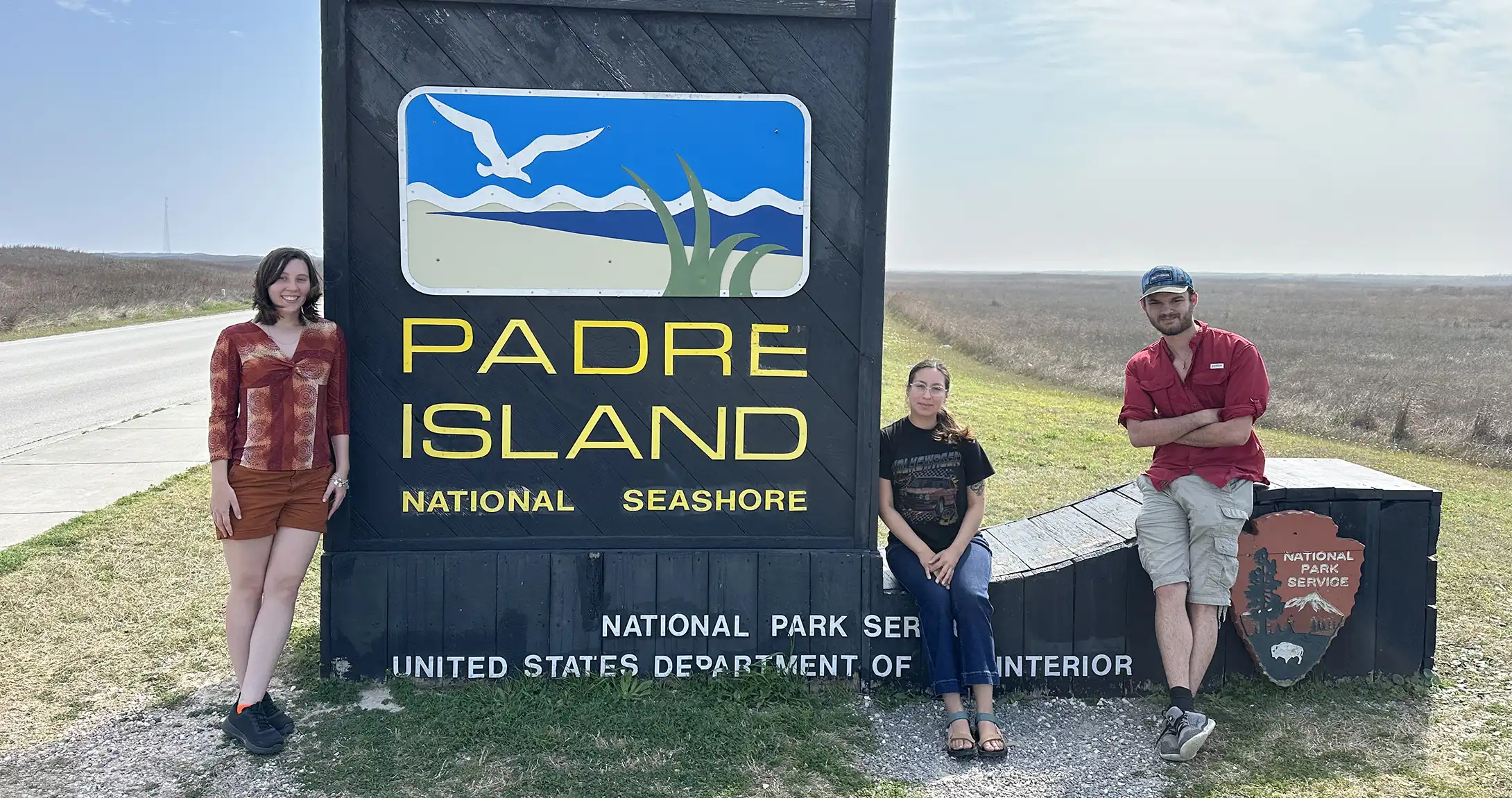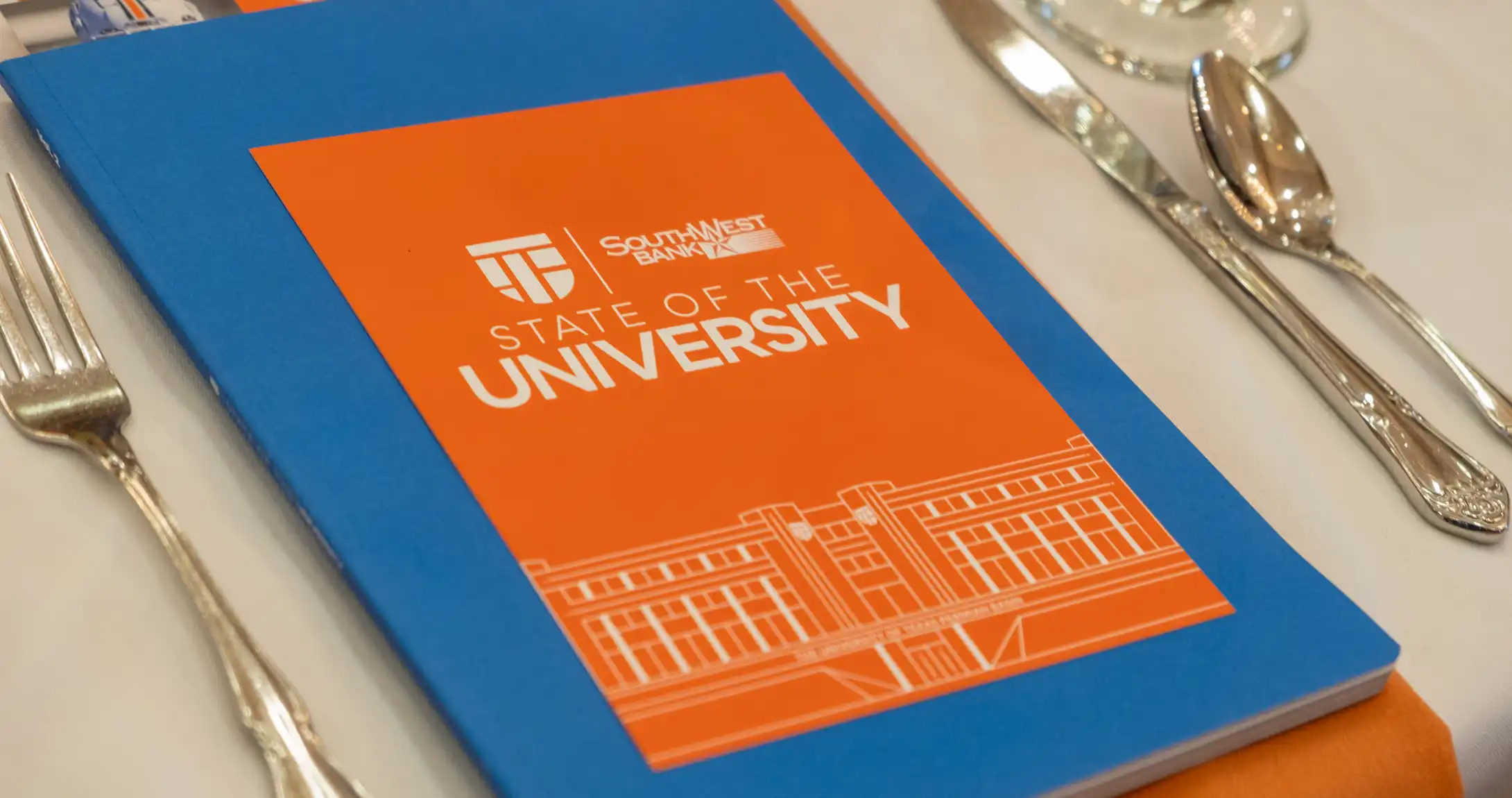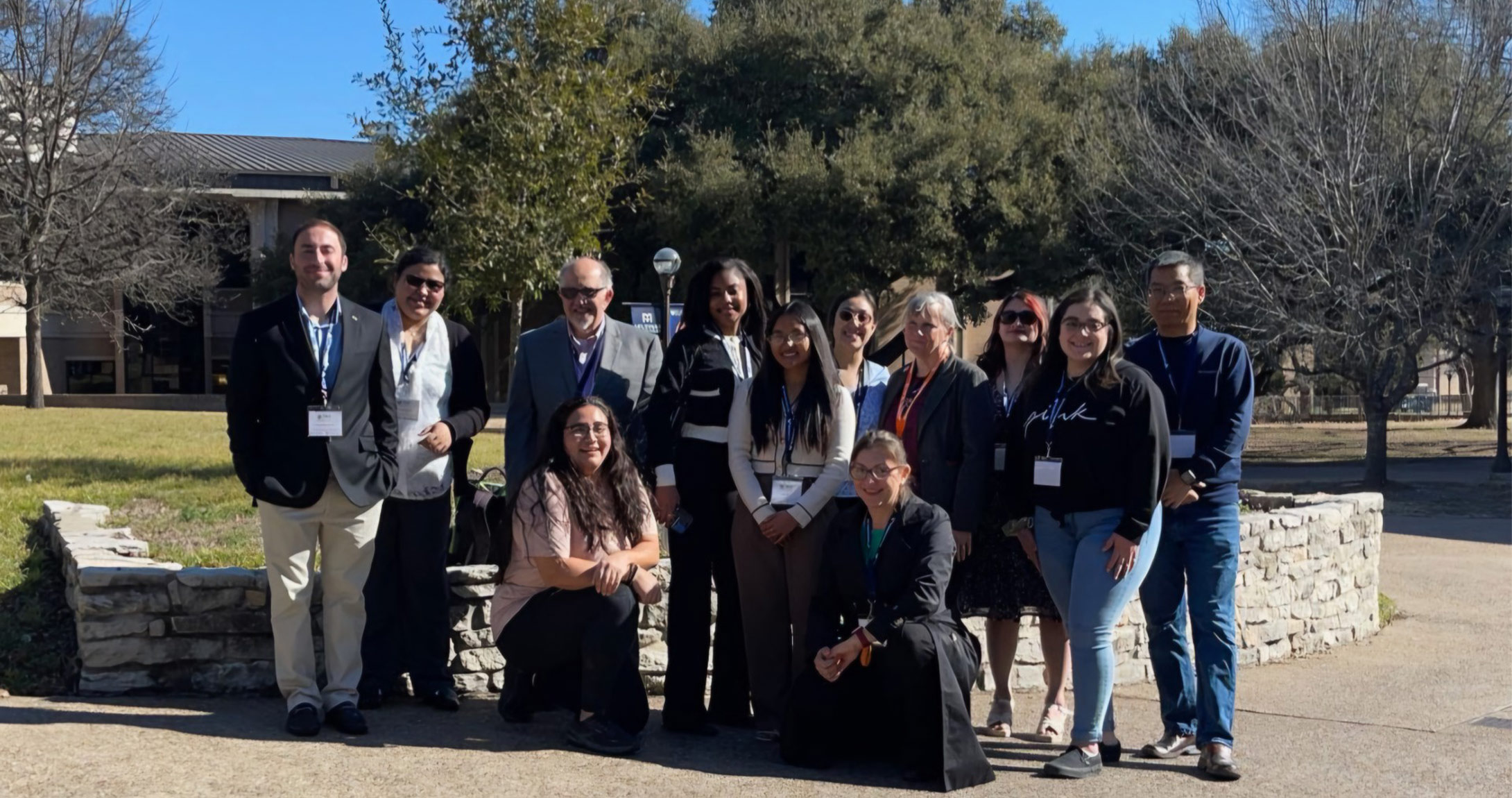Although the course has been taught previously, this was the first time it included a field component.
For the first time, students in The University of Texas Permian Basin’s Oceanography course swapped the classroom for coastal Texas during spring break, bringing the study of the ocean to life through a hands-on field trip to the Gulf Coast.
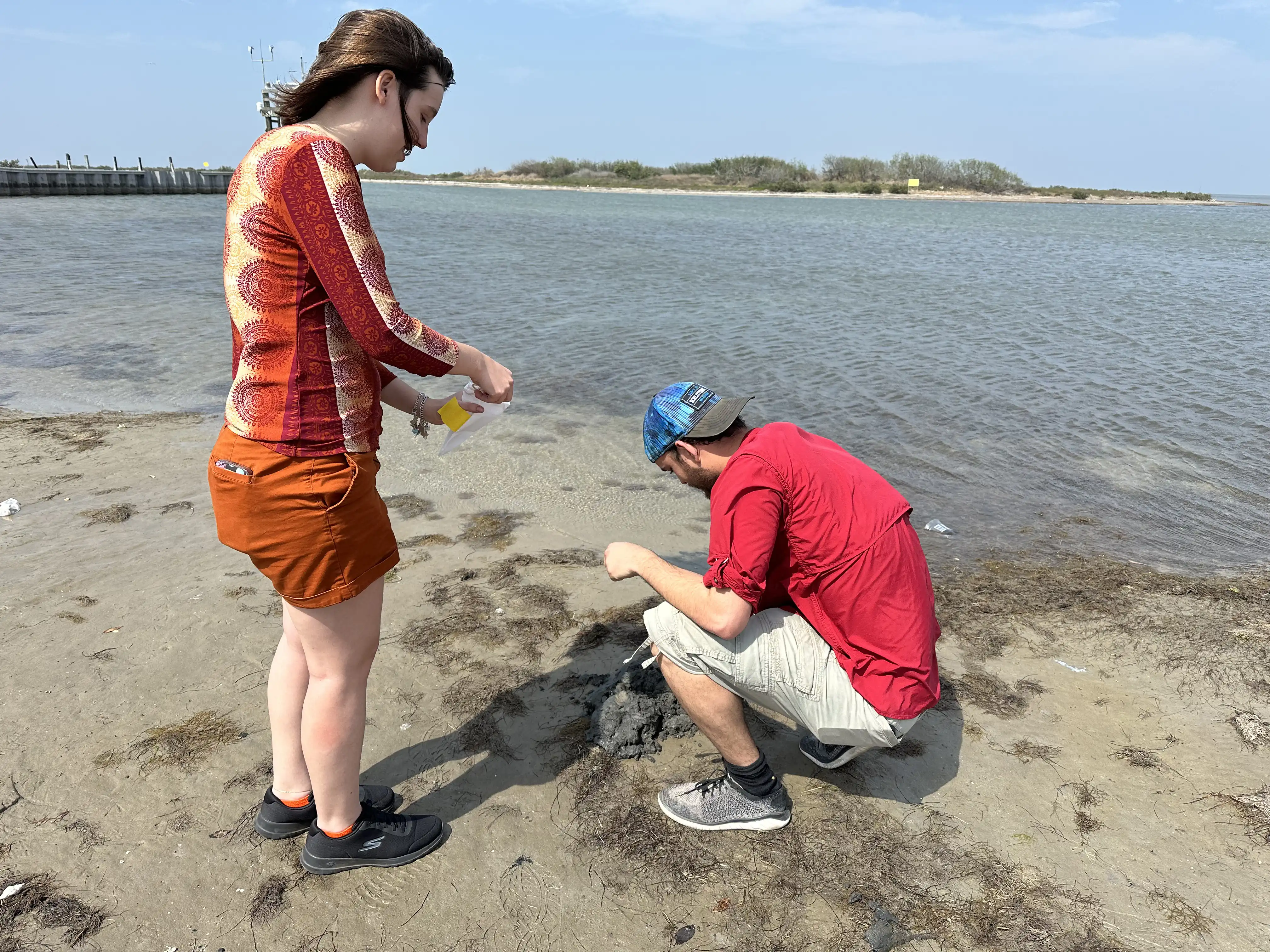 The trip, led by Dr. Miles Henderson, assistant professor in the Department of Geosciences, marked a major milestone for the oceanography course. Although the course has been taught previously, this was the first time it included a field component. Twelve students are enrolled in the course this semester, and three took part in the optional trip.
The trip, led by Dr. Miles Henderson, assistant professor in the Department of Geosciences, marked a major milestone for the oceanography course. Although the course has been taught previously, this was the first time it included a field component. Twelve students are enrolled in the course this semester, and three took part in the optional trip.
“While I would’ve loved to take students to the Bahamas or the Florida carbonate platform to study reef structures, we had to stay a bit closer to home,” Dr. Henderson said. “Corpus Christi and the surrounding area offered us a rich landscape to explore oceanographic concepts firsthand.”
The group made their base at Padre Island National Seashore, where they experienced coastal processes including barrier island formations, sediment movement by waves and tides, and the unique features of the nearby lagoons. Students collected water and sediment samples, which were brought back to campus for further analysis and to include classmates who couldn’t attend.
Prior to the trip, the class focused on the physical and chemical properties of oceans. Upon returning, students began studying nutrient cycles, trophic levels, and how oceans have historically responded to climate change.
Beyond the campsite, the class visited the Texas State Aquarium to observe marine life from the Gulf of Mexico and Caribbean. They also toured the University of Texas Marine Science Institute in Port Aransas, where they explored interactive exhibits at the Patton Center focused on oceanographic research methods.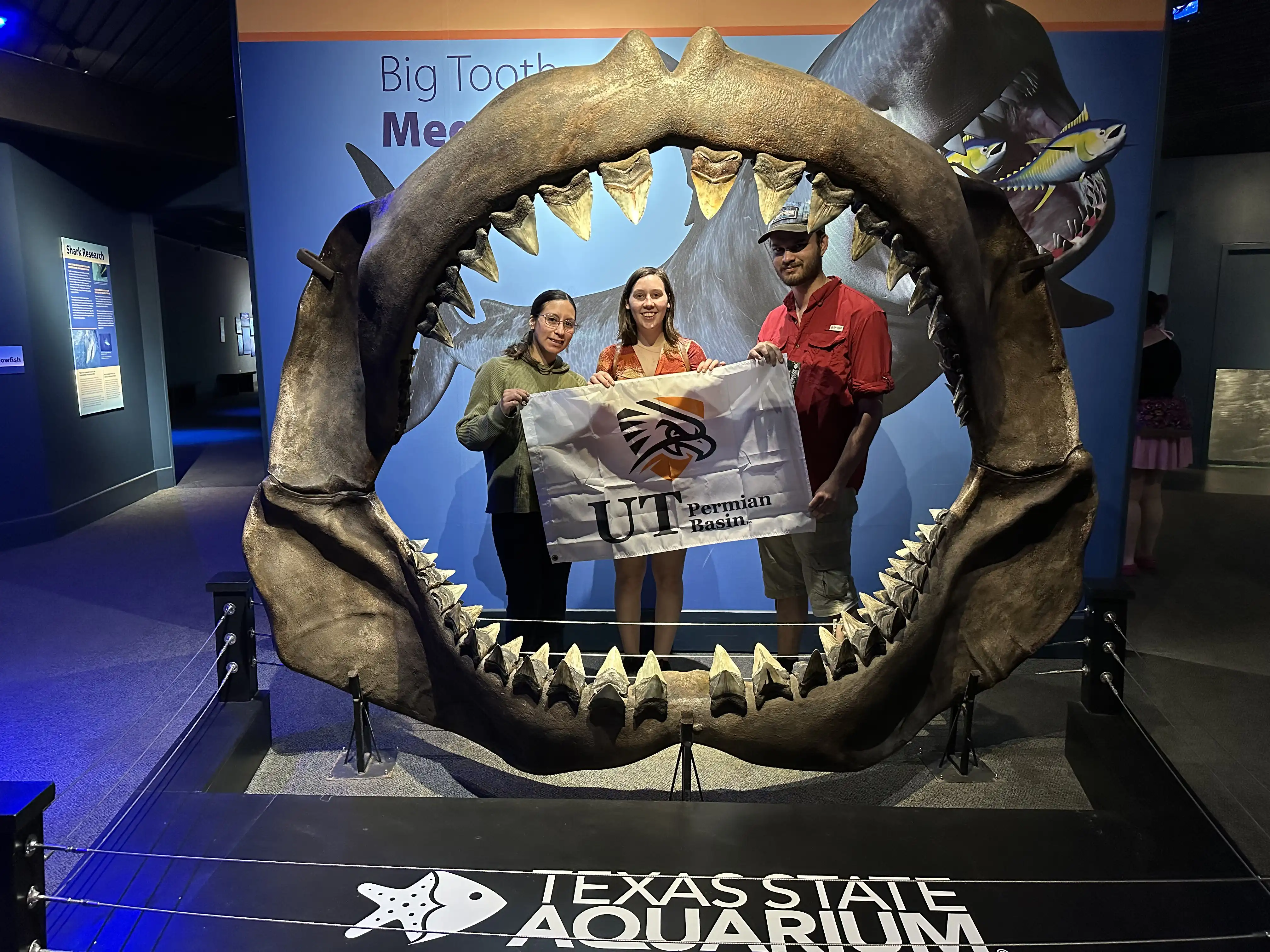
An educational boat ride through Laguna Madre gave students the opportunity to collect lagoon sands for lab study. Back on Padre Island’s beaches, they discussed marine debris accumulation—a real-world lesson tied to Gulf surface currents and storm-driven litter. The group concluded their journey at the Texas Maritime Museum, learning how early Texans utilized the Gulf for trade, travel, and agriculture.
The Oceanography course, which was last offered in 2021, is now part of a revamped elective rotation that allows it to be taught on demand, roughly every other year based on student interest.
UT Permian Basin continues to expand experiential learning opportunities. Discover more about our Geology program here.
 The trip, led by Dr. Miles Henderson, assistant professor in the Department of Geosciences, marked a major milestone for the oceanography course. Although the course has been taught previously, this was the first time it included a field component. Twelve students are enrolled in the course this semester, and three took part in the optional trip.
The trip, led by Dr. Miles Henderson, assistant professor in the Department of Geosciences, marked a major milestone for the oceanography course. Although the course has been taught previously, this was the first time it included a field component. Twelve students are enrolled in the course this semester, and three took part in the optional trip. “While I would’ve loved to take students to the Bahamas or the Florida carbonate platform to study reef structures, we had to stay a bit closer to home,” Dr. Henderson said. “Corpus Christi and the surrounding area offered us a rich landscape to explore oceanographic concepts firsthand.”
The group made their base at Padre Island National Seashore, where they experienced coastal processes including barrier island formations, sediment movement by waves and tides, and the unique features of the nearby lagoons. Students collected water and sediment samples, which were brought back to campus for further analysis and to include classmates who couldn’t attend.
Prior to the trip, the class focused on the physical and chemical properties of oceans. Upon returning, students began studying nutrient cycles, trophic levels, and how oceans have historically responded to climate change.
Beyond the campsite, the class visited the Texas State Aquarium to observe marine life from the Gulf of Mexico and Caribbean. They also toured the University of Texas Marine Science Institute in Port Aransas, where they explored interactive exhibits at the Patton Center focused on oceanographic research methods.

An educational boat ride through Laguna Madre gave students the opportunity to collect lagoon sands for lab study. Back on Padre Island’s beaches, they discussed marine debris accumulation—a real-world lesson tied to Gulf surface currents and storm-driven litter. The group concluded their journey at the Texas Maritime Museum, learning how early Texans utilized the Gulf for trade, travel, and agriculture.
The Oceanography course, which was last offered in 2021, is now part of a revamped elective rotation that allows it to be taught on demand, roughly every other year based on student interest.
UT Permian Basin continues to expand experiential learning opportunities. Discover more about our Geology program here.
